Azumi S A AZUMISPEED55 Mobile phone User Manual
Azumi S.A Mobile phone
User manual
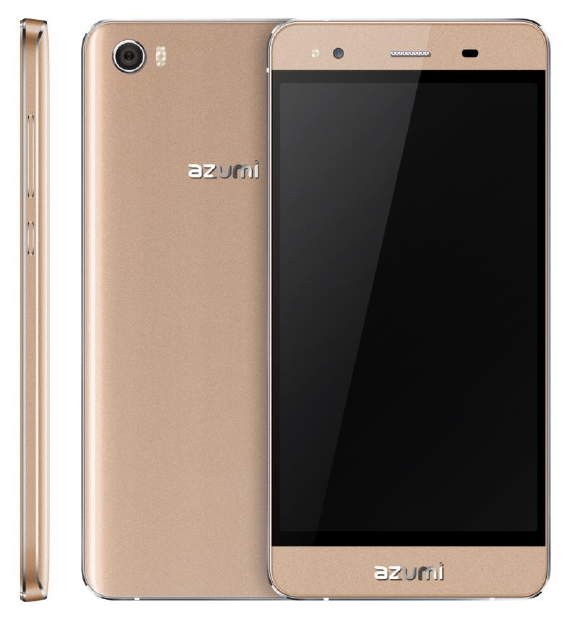
AZUMI
Speed 5.5
USER MANUAL
WELCOME
Congratulations on your purchase of the Azumi mobile phone. Your phone provides many functions which
are practical for daily use, such as a hands-free loudspeaker, camera, MP3 player, Ultra clear video, WIFI and
GPS.
You can read the manual to understand how to use Azumi mobile phone and experience the well-established
functions and simple operation method. We suggest always use original accessories from your handset in order to
achieve proper performance. Azumi shall not be responsible for any damage in machinery due to use of non-original
components.
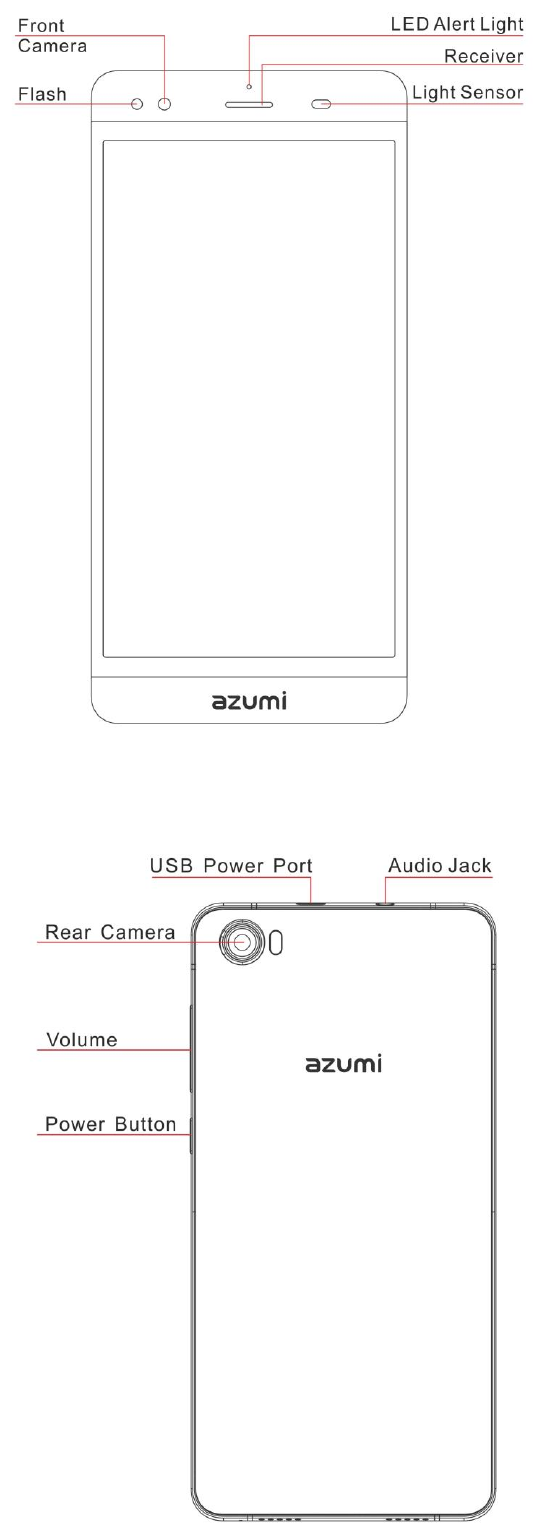
FRONT VIEW
BACK VIEW
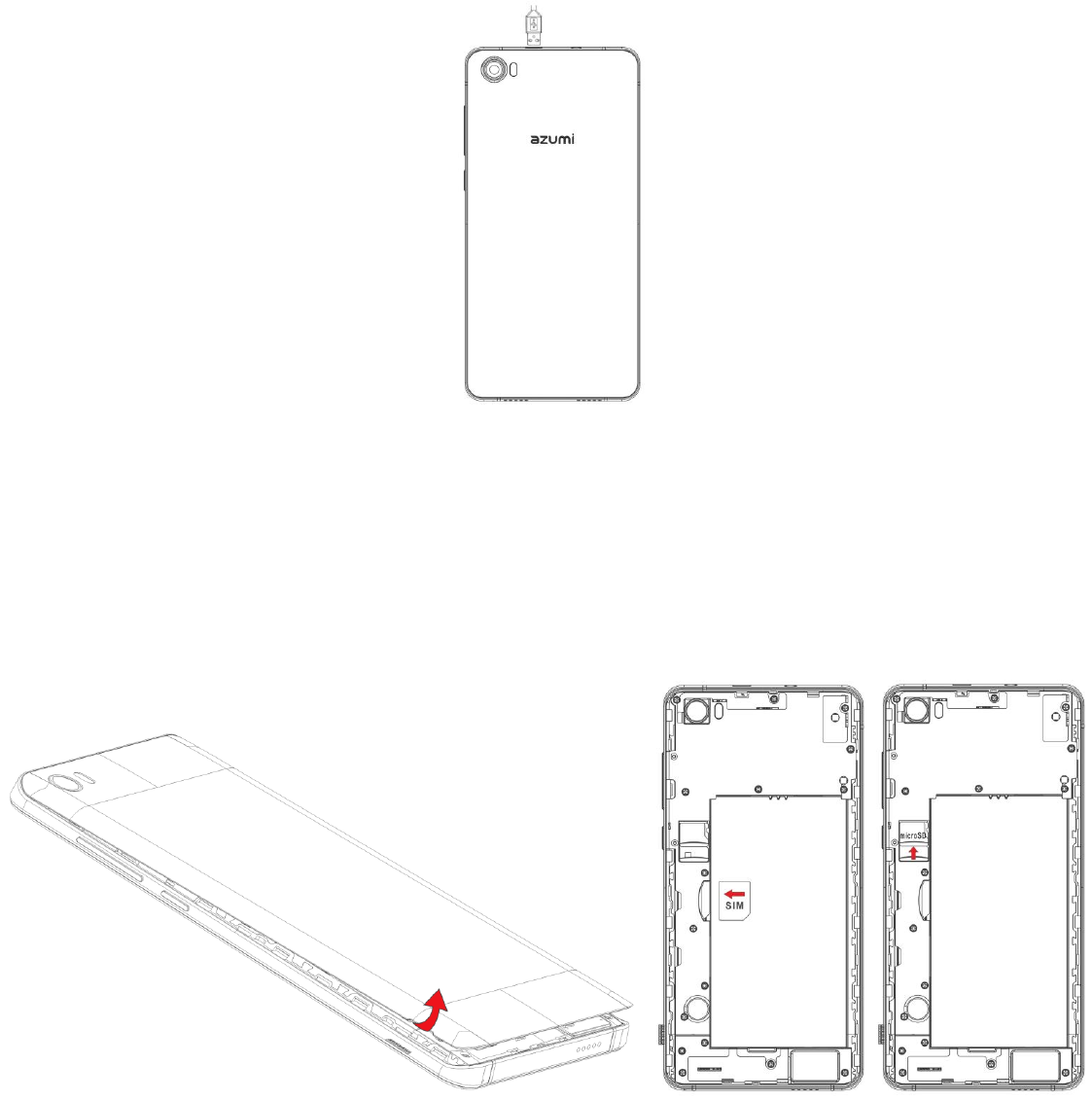
CHARGE THE BATTERY
Connect this end to phone’s USB port.
Your battery has been partially charged at the factory, but you may need to recharge it before you can switch the
phone on for the first time.
Tip: Charge the battery before using it for the first time. Use only AZUMI approved chargers, batteries and cables.
INSERT SIM AND Micro SD CARD
Please insert the SIM card according to the label on the phone. Make sure that the clipped corner of the SIM card
and the metallic contacts are facing the correct direction. Slide the SIM card into the slot until it doesn't move up any
further.
Micro SD: Push the memory card into the memory card slot until it locks into place.
Use only compatible memory cards approved for use with this device.
Tip: Your phone supports memory cards with a capacity of up to 32 GB.
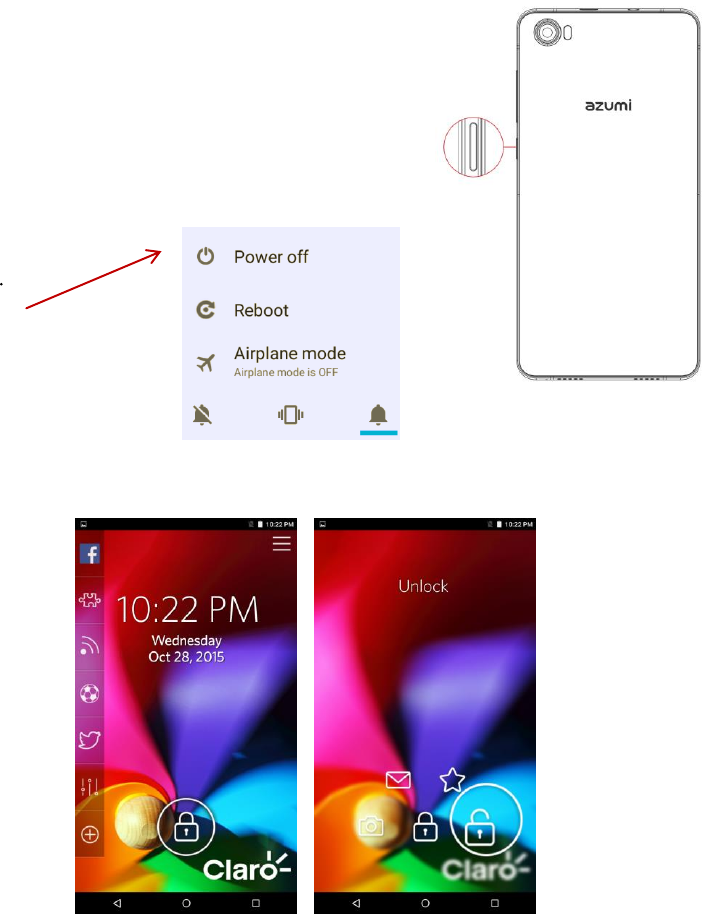
TURN THE PHONE ON& OFF
Hold down the power
button to turn the phone
on.
Hold down the power
button, then touch Power
off to turn the phone off
DIM LOCK & WAKE THE PHONE
When the power is on and you want to dim the screen, press the power button.
When the screen is dimmed and you want to wake the phone, press the power button and then drag the lock to the
right.
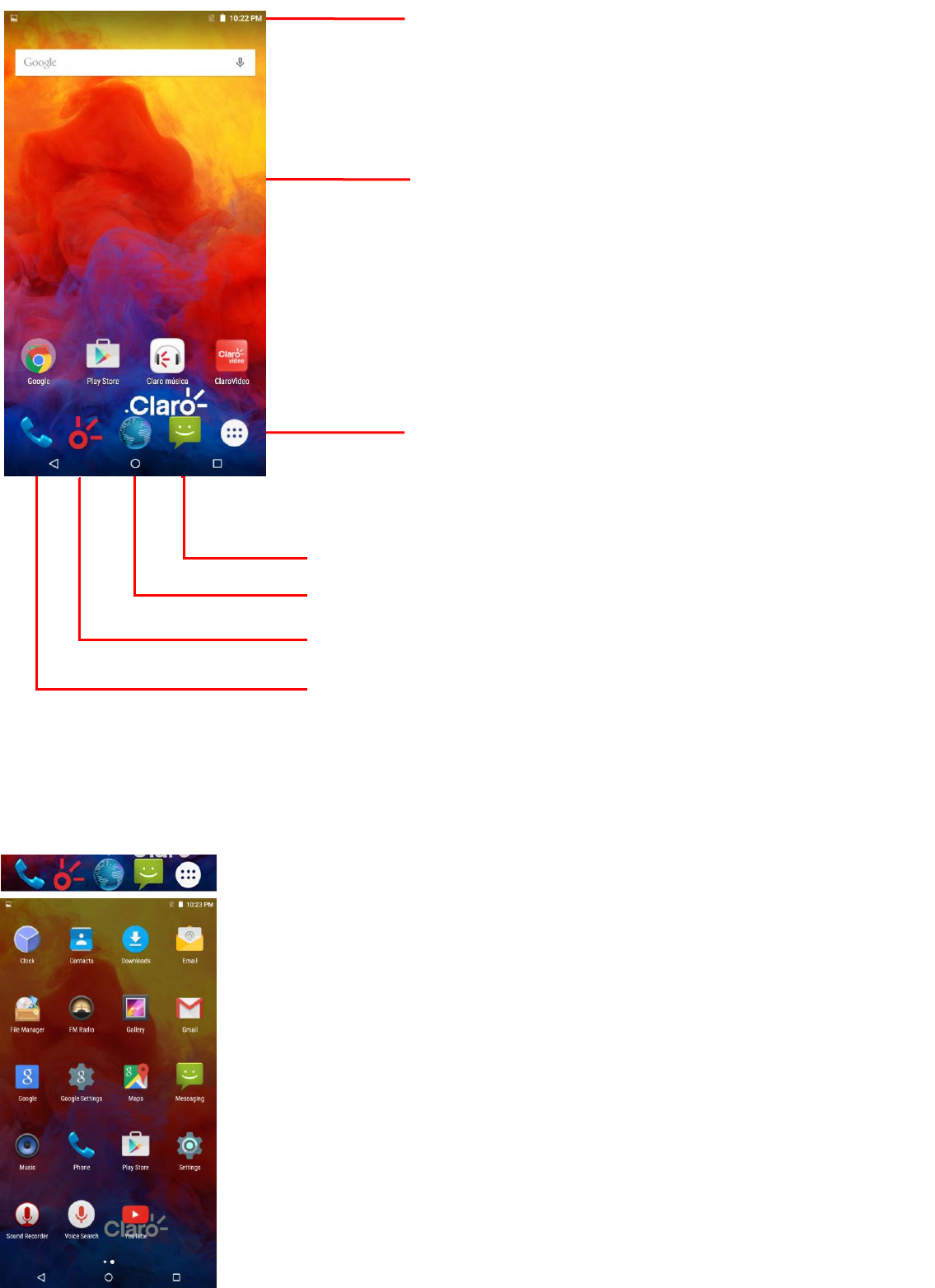
HOME SCREEN
APPS
1. Touch it to enter app tray.
2. Touch an app to launch it
Phone status bar and notifications.
Touch and hold an empty spot to change the wallpaper
All apps icons
Messages
Internet
Touch to enter Claro interface
Make a phone call
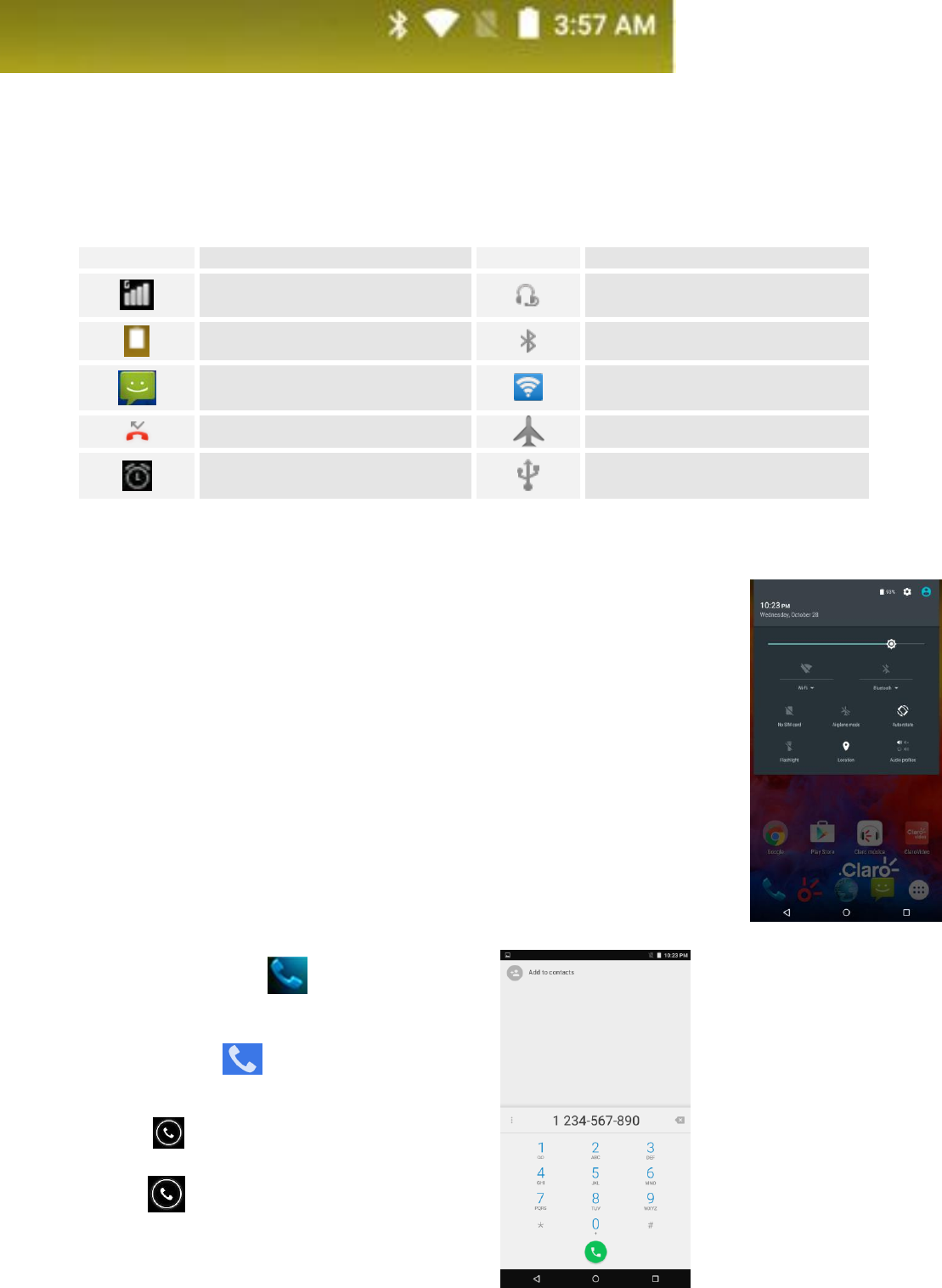
STATUS BAR
Shows phone's status information including the time, signal strength, battery status, and notification icons.
Status icons
The icons displayed at the top of the screen provide information about the status of the
device. The icons listed in the table below are some of the most common ones.
NOTIFICATION PANEL
Notifications alert you the arrival of new messages, calendar events, and alarms, as well
as to ongoing events.
Drag down to display notifications
Touch a notification to respond
MAKE & ANSWER A CALL
1. From the Home screen touch
2. Dial a number using the dial pad.
3. Touch to initiate the call
Answer a call, Drag
Decline a call, Drag
Icon
Statement
Icon
Statement
Signal strength
Headset connected
Indicates battery level
Bluetooth is activated
Unread messages
Wi-Fi is connected
Missed calls
Airplane mode is activated
Alarm is activated
USB is connected
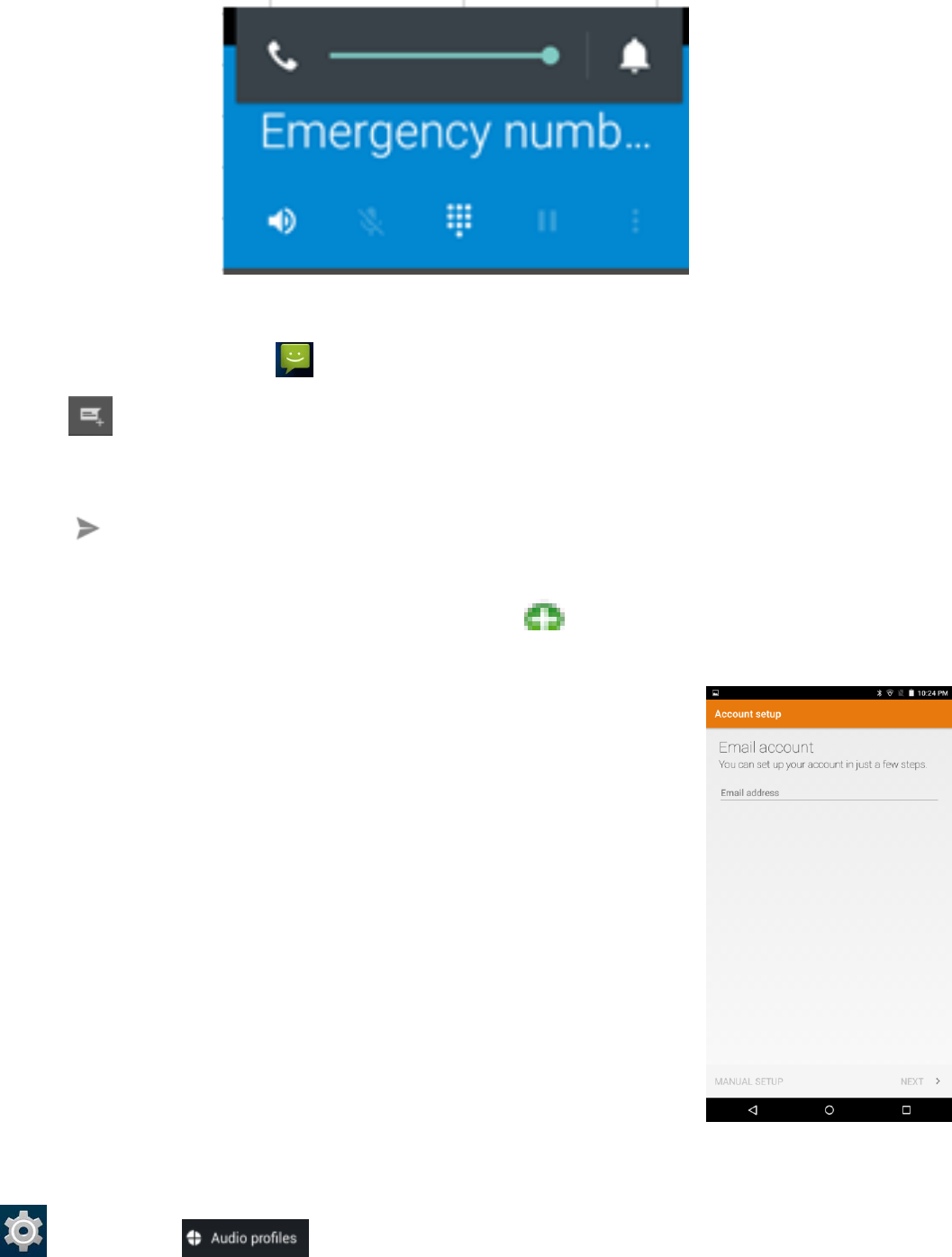
VOLUME CONTROL WHEN CALLING
To adjust the in-call volume, use the Volume up and down keys of the phone.
SEND A TEXT
1. From the Home screen, touch
2. Touch
3. Enter a recipient.
4. Enter a message
5. Touch Send the message
Use the following method to create a multimedia message: Touch and attach pictures, videos, contacts, notes,
events and other information.
ADDING EMAIL ACCOUNTS
Set up an email account when opening Email for the first time. After that, you can
configure Email to send and receive email from additional accounts.
To add an email account:
1. Tap the e-mail icon. In Your account interface, tap Next. In e-mail address
option, enter your e-mail address. In password option, → enter your e-mail password.
Tap Next.
2. Filling the email address and password, tap next to setup email
3. Tap next to enter your email.
SET A RINGTONE
Press audio profile , select the profiles you want to set, you can customize the ringtone and
volume of incoming call, notification ringtone in this interface
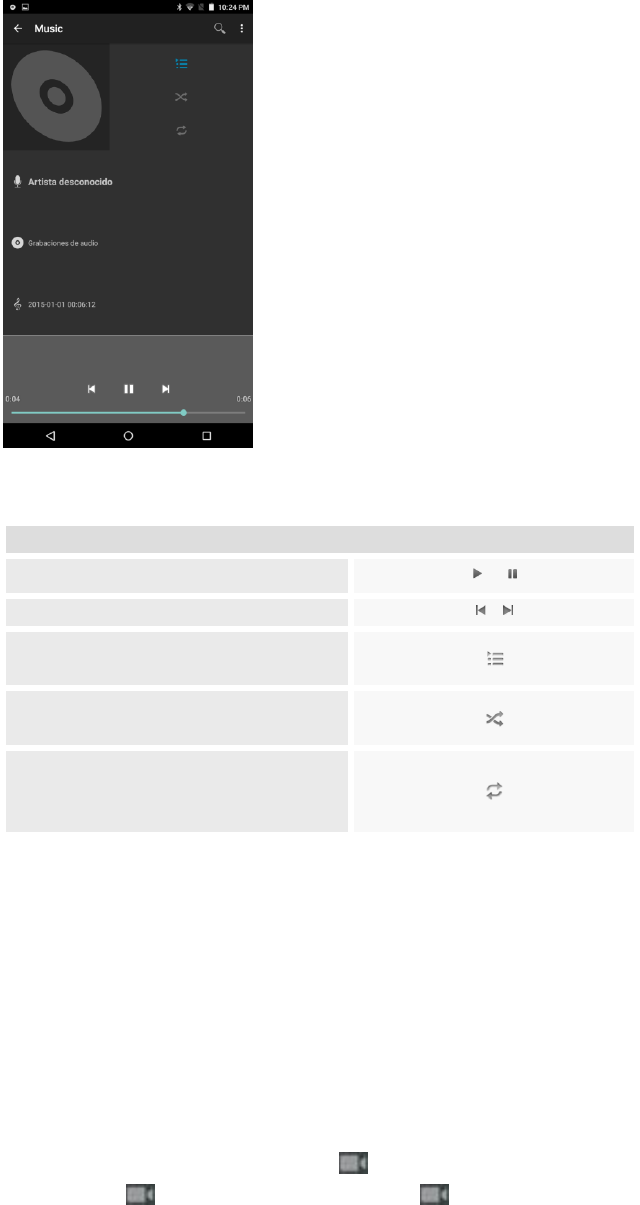
FM RADIO
1. Pull out the telescopic antenna or insert earphone, then Tap the Power icon to stop or play FM.
2. Tap the forward by 0.1 MHz or scroll the knob icon to change channel frequency. Press volume key to adjust the
volume.
3. Tap Auto search, Settings, Record and Favorites icon to adjust.
MUSIC PLAYER
Controls
Play/Pause
/
Previous/Next
/
Now playing: Touch to open the
current playlist.
Shuffle: Touch to shuffle the current
playlist.
Repeat: Touch to repeat the current
playlist; touch again to repeat the
current track.
TAKE A PICTURE
1. Launch the camera by pressing the camera icon on the home screen.
2. In the camera app, touch the screen to focus on a specific area.
3. Press the camera button to take a picture.
SHOOT A VIDEO
1. Launch the camera by pressing the camera icon on the home screen.
2. In the camera app, select video icon to start recording
3. Press the icon to stop recording and icon again to start recording.
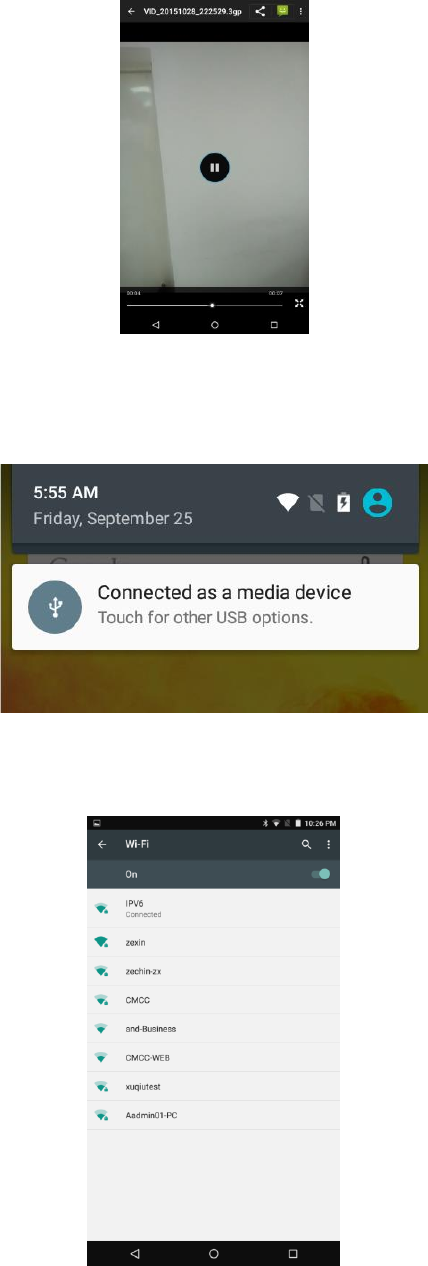
VIDEO PLAYER
The videos can be played, in your device (for example, the video you captured by the camera) or video files stored in
compatible SD card.
USE AS MODEM VIA USB
You can connect your phone to a computer with a USB cable, to transfer music, pictures, and other files between
your phone’s SD card and the computer.
CONNECT TO Wi-Fi NETWORKS
Activate the Wi-Fi feature to connect to a Wi-Fi network and access the Internet or other network devices.
Touch Settings>Wireless & networks > WLAN settings. Check Wi-Fi to turn it on. The phone scans for available Wi-
Fi networks and displays the names of those it finds. Secured networks are indicated with a Lock icon.
FCC Statement
1. This device complies with Part 15 of the FCC Rules. Operation is subject to the following two conditions:
(1) This device may not cause harmful interference.
(2) This device must accept any interference received, including interference that may cause undesired operation.
2. Changes or modifications not expressly approved by the party responsible for compliance could void the user's
authority to operate the equipment.
NOTE:
This equipment has been tested and found to comply with the limits for a Class B digital device, pursuant to Part 15
of the FCC Rules. These limits are designed to provide reasonable protection against harmful interference in a
residential installation.
This equipment generates uses and can radiate radio frequency energy and, if not installed and used in accordance
with the instructions, may cause harmful interference to radio communications. However, there is no guarantee that
interference will not occur in a particular installation. If this equipment does cause harmful interference to radio or
television reception, which can be determined by turning the equipment off and on, the user is encouraged to try to
correct the interference by one or more of the following measures:
- Reorient or relocate the receiving antenna.
- Increase the separation between the equipment and receiver.
- Connect the equipment into an outlet on a circuit different from that to which the receiver is connected.
- Consult the dealer or an experienced radio/TV technician for help.
SAR Information Statement
Your wireless phone is a radio transmitter and receiver. It is designed and manufactured not to exceed the emission
limits for exposure to radiofrequency (RF) energy set by the Federal Communications Commission of the U.S.
Government. These limits are part of comprehensive guidelines and establish permitted levels of RF energy for the
general population. The guidelines are based on standards that were developed by independent scientific
organizations through periodic and thorough evaluation of scientific studies. The standards include a substantial
safety margin designed to assure the safety of all persons, regardless of age and health. The exposure standard for
wireless mobile phones employs a unit of measurement known as the Specific Absorption Rate, or SAR. The SAR
limit set by the FCC is 1.6 W/kg. * Tests for SAR are conducted with the phone transmitting at its highest certified
power level in all tested frequency bands. Although the SAR is determined at the highest certified power level, the
actual SAR level of the phone while operating can be well below the maximum value. This is because the phone is
designed to operate at multiple power levels so as to use only the power required to reach the network. In general,
the closer you are to a wireless base station antenna, the lower the power output. Before a phone model is available
for sale to the public, it must be tested and certified to the FCC that it does not exceed the limit established by the
government adopted requirement for safe exposure. The tests are performed in positions and locations (e.g., at the
ear and worn on the body) as required by the FCC for each model. The highest SAR value for this model phone
when tested for use at the ear is 0.244 W/Kg and when worn on the body, as described in this user guide, is 0.785
W/Kg (Body-worn measurements differ among phone models, depending upon available accessories and FCC
requirements).. While there may be differences between the SAR levels of various phones and at various positions,
they all meet the government requirement for safe exposure. The FCC has granted an Equipment Authorization for
this model phone with all reported SAR levels evaluated as in compliance with the FCC RF exposure guidelines.
SAR information on this model phone is on file with the FCC and can be found under the Display Grant section of
http://www.fcc.gov/ oet/fccid after searching on FCC ID: QRP- AZUMISPEED55 Additional information on Specific
Absorption Rates (SAR) can be found on the Cellular Telecommunications Industry Asso-ciation (CTIA) web-site at
http://www.wow-com.com. * In the United States and Canada, the SAR limit for mobile phones used by the public is
1.6 watts/kg (W/kg) averaged over one gram of tissue. The standard incorporates a substantial margin of safety to
give additional protection for the public and to account for any variations in measurements.
Body-worn Operation
This device was tested for typical body-worn operations. To comply with RF exposure requirements, a minimum
separation distance of 10 mm must be maintained between the user’s body and the handset, including the antenna.
Third-party belt-clips, holsters, and similar accessories used by this device should not contain any metallic
components. Body-worn accessories that do not meet these requirements may not comply with RF exposure
requirements and should be avoided. Use only the supplied or an approved antenna.